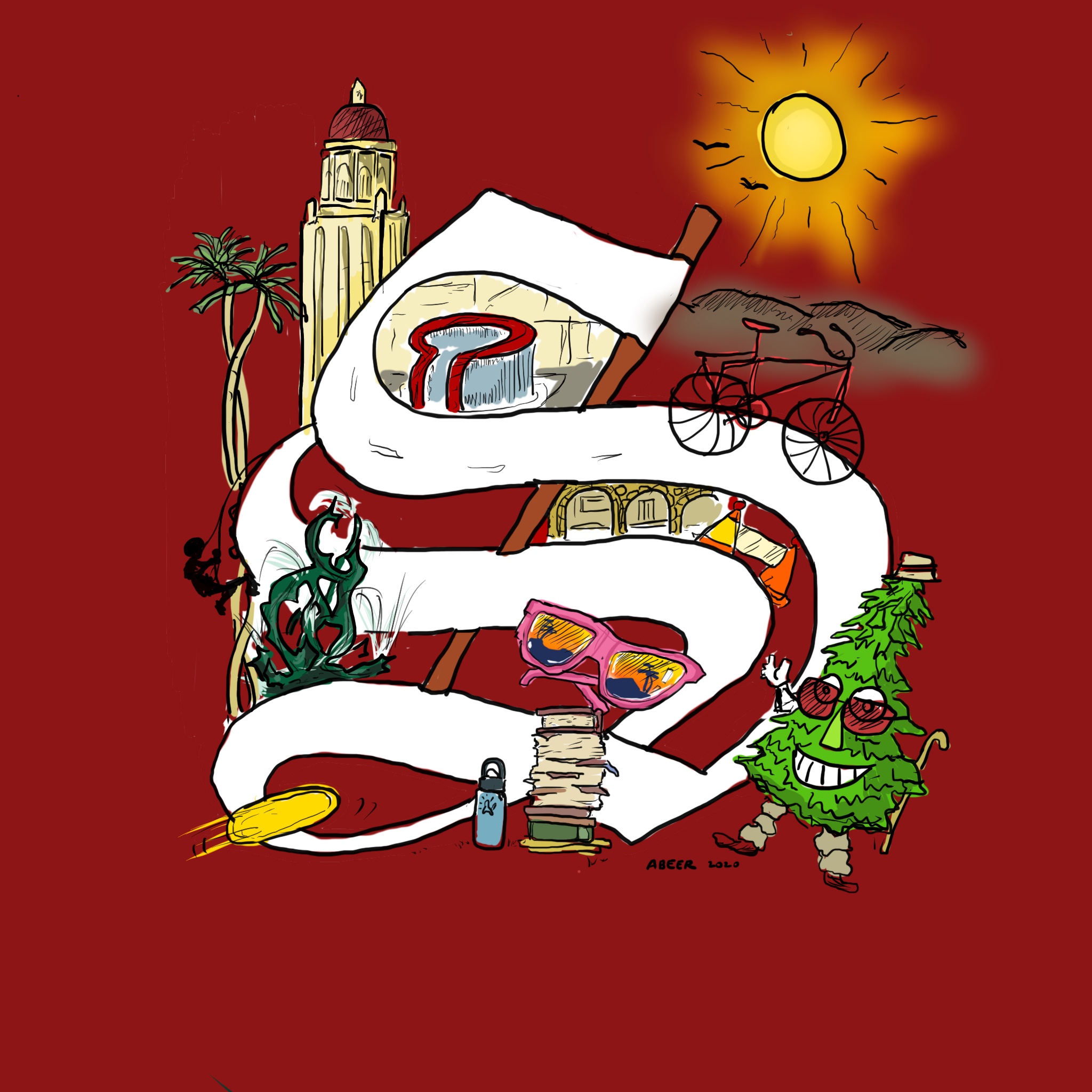
By Emma Talley and Marli Bosler
Stanford will proceed with plans to bring juniors and seniors back to campus for spring quarter, according to an announcement sent to students on Thursday.
Still, though, that announcement came with a caveat. Though “current modeling suggests that chances are low of needing to make a change in this plan before classes begin,” President Marc Tessier-Lavigne and Provost Persis Drell wrote, a rise in SARS-Cov-2 variants or a new lengthy stay-at-home order in Santa Clara County could lead to a reversal of the decision.
“If one is necessary, we will let students and families know with as much notice as possible,” Tessier-Lavigne and Drell promised.
Earlier this year, Stanford already announced and then scrapped plans to bring students back to campus for both the fall and winter quarters, the latter of which were canceled just three days before the start of the quarter.
Now, administrators say, they are prepared to manage positive cases at the start of the quarter if any unknowingly infected students arrive on campus.
“While many restrictions will remain in place, we have a greater hope of offering a meaningful on-campus experience in the spring than we did this winter,” Tessier-Lavigne and Drell wrote.
Currently, 5,100 graduate students and 1,500 undergraduate students with special circumstances are residing on campus. An additional 1,300 juniors and seniors have applied for housing in the spring.
For students coming to campus, face coverings, social distancing, and twice-weekly COVID-19 tests will be required. Though Stanford hopes to offer a limited number of in-person classes, most classes will still be remote, and only small gatherings will be allowed. There will also be a “period of restricted activity” for all undergraduates at the beginning of the quarter.
In an email to student staff, Assistant Vice Provost for Residential Education Cheryl Brown wrote that she would continue planning with R&DE and have more information on which student dorms will open and houses that will stay open.
“While keeping friend groups together and eliminating the need for moves wherever possible is a goal, some of you were moved this quarter due to the closure of RF houses, and some will need to move again at the start of next quarter,” she wrote.
Students will be informed of their housing assignments on March 5. To allow students more time to plan, the opening of spring quarter enrollment has also been pushed back one week from February 28 to March 7.
Juniors and seniors can schedule move-in appointments during spring break from March 24-28. Instruction is still planned to start on March 29. The deadline to submit a request for a leave of absence is the same day at 5:00 pm.
As Stanford approaches one year of remote learning, health authorities cautiously indicate that local case statistics may be improving.
In January, when Stanford canceled plans for a winter return, the rolling 7-day average in Santa Clara County had reached nearly 1,500 cases. On campus, with only a fraction of students moved back in, Stanford reported 43 positive cases, a record at the time.
Since late January, the Bay Area regional stay-at-home order has been lifted. The shift has allowed services like outdoor dining and collegiate sports to resume, provided they abide by county regulations.
As of this week, although Santa Clara County remains in the highest-risk “purple tier,” the rolling 7-day average sat just below 300 cases, and Stanford’s own COVID-19 data reported only two new cases in students and nine total cases in employees. In the email, Tessier-Lavigne and Drell wrote, “We saw almost no community spread during winter quarter as a whole,” although The Daily has repeatedly reported on campus gatherings among undergraduate and graduate students.
Earlier this month, Associated Students of Stanford University (ASSU) President Vianna Vo ’21 cited student noncompliance along with COVID conditions in Santa Clara County and expectations for the quality of on-campus life in recommending that Stanford not invite students back for spring. Instead, she and Vice President third year law student Chris Middleton ’16 argued, the University should prioritize graduate students and students with special circumstances in a memo sent to Vice Provost for Student Affairs Susie Brubaker-Cole.
The memo drew criticism from some students, who said that the executives failed to adequately include student perspectives. Vo said the executives relied on “the perspective of members in the ASSU” to make the recommendation.
Following the release of the memo, the Undergraduate Senate sent out a survey to the student body that showed that 60% of responding undergraduates “strongly agree” with allowing juniors and seniors to return to campus if medical experts deemed the risk acceptable, and only 8% of responding students “strongly disagree.”
In Thursday’s email, Tessier-Lavigne and Drell wrote that though they heard concerns that juniors and seniors will disregard public health protocols, the University has a higher expectation of upperclass students, and administrators believe the vast majority of students will engage in responsible behaviors.
“Though we expect some gatherings to be possible, campus life still will be far less vibrant than students would experience in normal times,” Tessier-Lavigne and Drell wrote. “All juniors and seniors should consider these factors before making a final decision to come to campus.”




